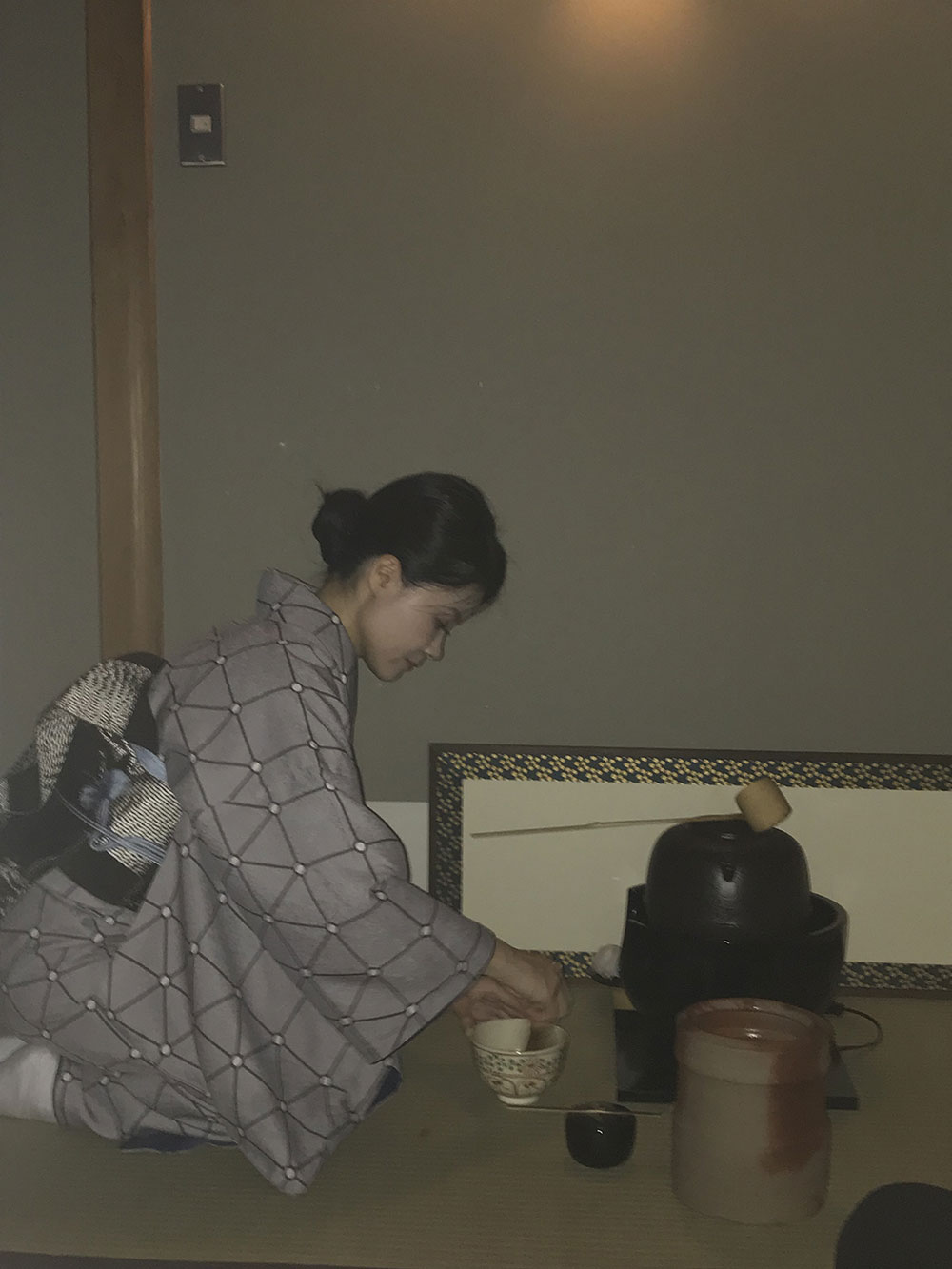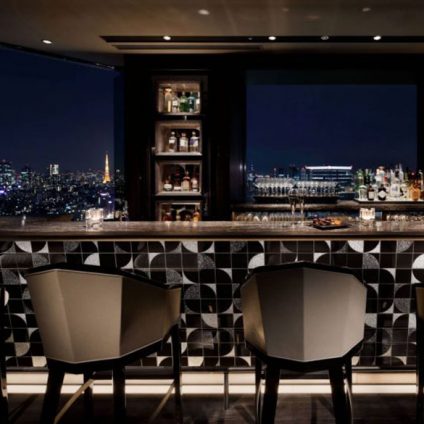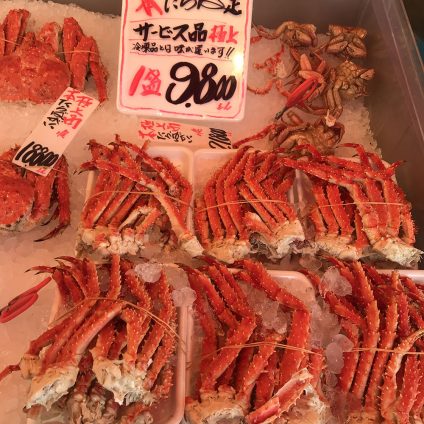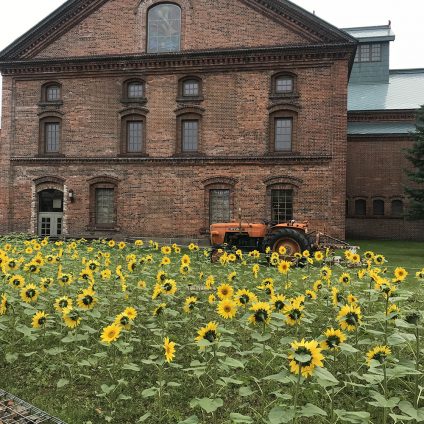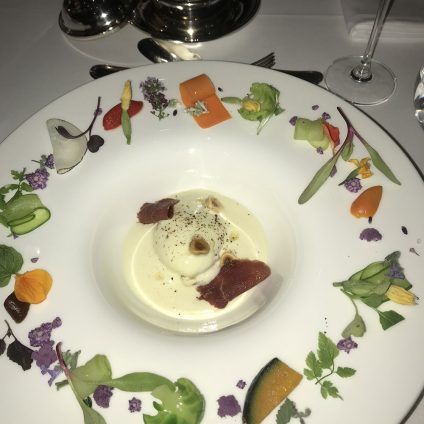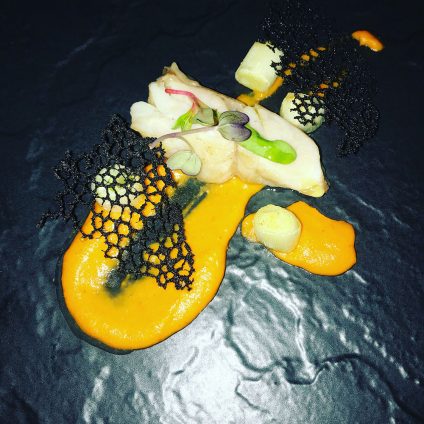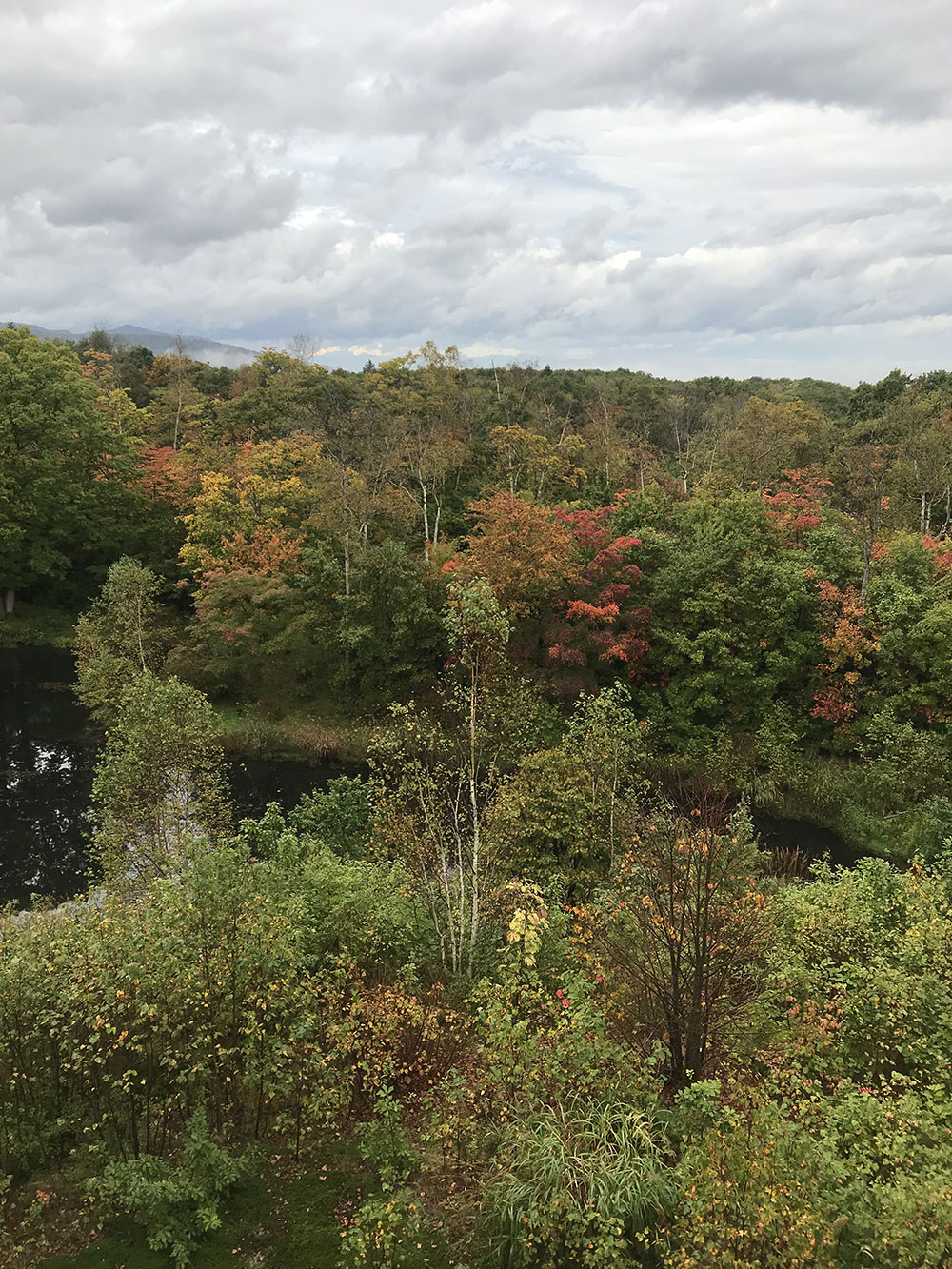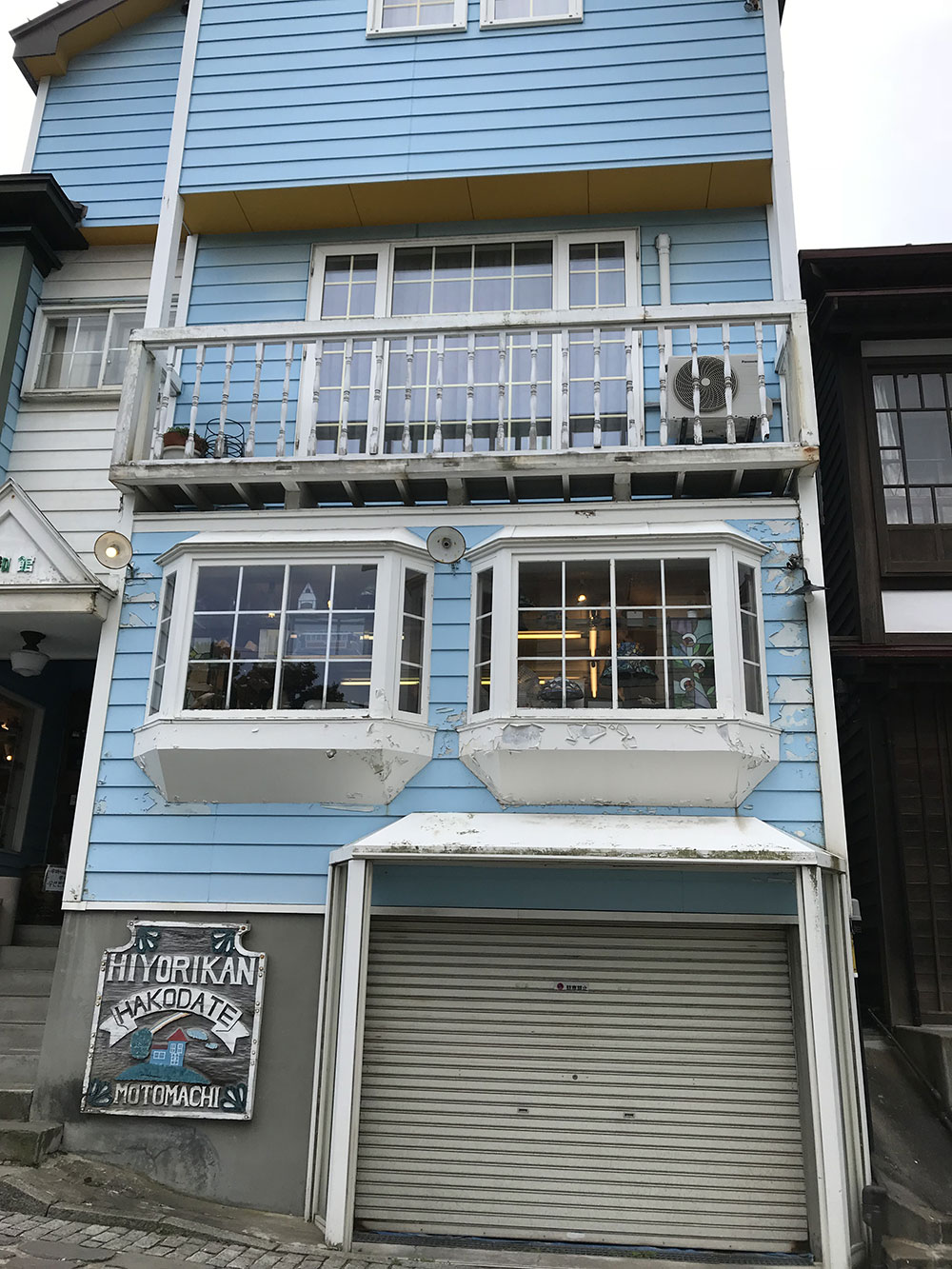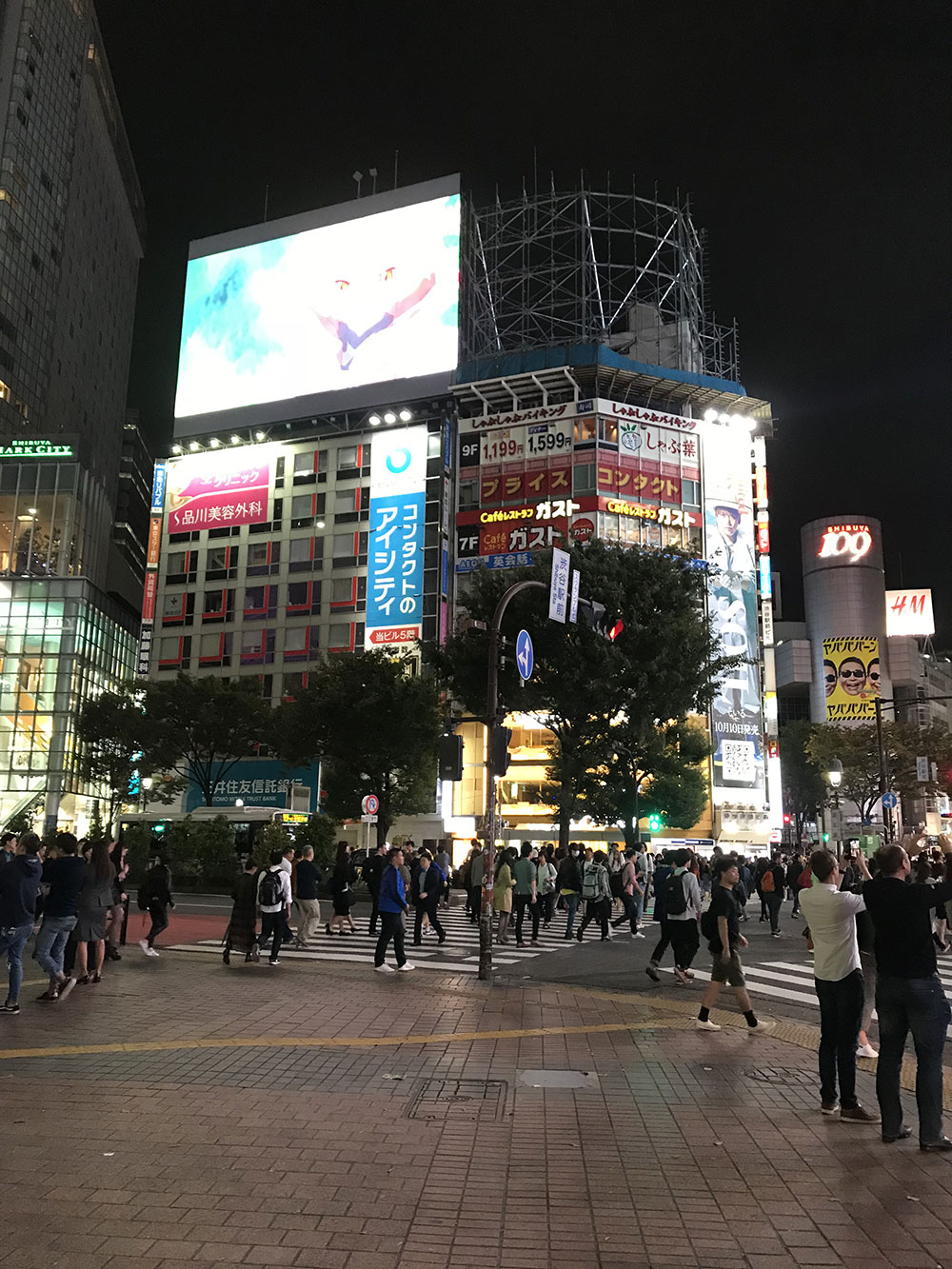With its stunning landscapes and strong traditional identity, Japan is a country with a split personality, a place where modern bustling cities sit alongside breathtakingly natural landscapes, a fusion of both identies as if it was the most natural thingin the world.A country that we were excited to visit and somewhere you need to experience at least once in your lifetime.
Our visit was a culinary and cultural adventure courtesy of Prince Hotels, and began with a quick overnight stay in Tokyo at the Grand Prince Hotel Takanawa, in one of their Hanakohoro rooms. An area of the hotel that has been designed with authentic Japanese culture in mind. Soft light spreads from the sliding paper doors, and you can smell the fresh scent and feel the softness of the tatami mats beneath your feet. Traditional low beds and beautiful views over the Japanese gardenhave you encompassed in your own little bubble of calm, hard to believe you are in one of the busiest cities in the world!
Time for Tea
After a quick freshen up it was ‘Time for Tea’this wasn’t your normal tea this was a traditional Japanese Tea Ceremony, a ritual that dates back to at least 9th century. Rooted in Chinese Zen philosophy, the tea ceremony is a spiritual process, where the guests seek harmony and inner peace. It takes decades for the host to master the art of serving tea.
Taking place in a room made from bamboo, amid the cherry trees in the lush green garden. Sparsely decorated with tatami mats and a hanging scroll, we sit cross-legged on the floor and watch in awe as our host prepares the tea. A stir here, a little measure there, a nod and bow as she lovingly prepares the tea for us to drink. Served in small bowls and prepared for one person at a time the tea is thick matcha and when you’ve had a sip, you need to wipe where you drank from with your fingers and turn the bowl anti clockwise before you take another sip. The whole process is not about drinking tea, but is about preparing a bowl of tea from one’s heart, a unique experience, the ultimate in Japanese hospitality.
A 360-degree panorama!
Japanese cuisine is renowned the world over for being fresh, nutritious and healthy and If the food at Table 9 on the 39th floor of Shinagawa Prince Hotel was as spectacular as the 360-degree panoramic views over the Tokyo skyline we were in for a real treat. A fusion of flavours alongside dishes that were a delight to the taste buds, the menu is described as photogenic Western style cuisineand includes marinated scallop and shrimp cocktail, pate wrapped in roasted foie gras, sautéed sea bass, and Japanese beef sirloin all perfection on a plate. Suitably full after an exquisite dining experience it’s time to grab a cocktail and wow at the night views of Tokyo, making it an unforgettable experience in the middle of this bustling city.
Sapporo
The following morning, we headed to theairport for a domestic flight to Sapporo, capital of the mountainous northern Japanese island of Hokkaido, famous for its beer, skiing and annual Sapporo Snow Festival. The airport is a massive centre full of restaurants, and it’s here chopsticks, bib and spoon in hand I ate the most delicious ramen noodles (a Japanese dish consisting of noodles served in a meat or fish-based broth). I have to agree with the guidebooks that state Sapporo offers the best ramen in Japan.
A little tip; don’t go on a first date and eat ramen there is no delicate way of eating this, hence the bib!
The Sapporo Prince hotel in the heart of Hokkaido’s capital was the perfect base for exploring. Near to many bars. shops, and restaurants you’re never far from the action. With a wealth of accommodation from standard twin tooms, to the floor-exclusive Royal Suite Rooms located on the 22nd-27th floors, there is something to suit every budget.
Hovering Technology
Located in the northernmost prefecture of Japan is The Sapporo Dome. The first stadium in the world with an impressive “hovering soccer stage” system, allowing for both football and baseball games. The full sized natural turf football pitch, slowly rolls from outdoors into the enclosed arena on 34 wheels, hovering 7.5cm by air pressure. When no games are scheduled the stage is left in the open area outside the stadium to grow the natural turf. And it’s this ‘hovering ‘pitch that will be getting plenty of use later this year when the Rugby World Cup comes to Japan and games are played at the stadium includingthe all-important first match for England against Tonga on Sunday 22nd September.
Seafood Delight
All that hitting baseballs and pretending to be part of the New York Yankees had made me needing some body fuel, which came in the form of fresh seafood at ‘AburiyaOdoriBisse’ a local restaurant that offers food locally sourced in Hokkaido. We had to take our shoes off before sitting round a sunken table and savouring the delights of fresh sushi and sashimi. The sushi here differs from the UK, there is an endless array of raw fish including salmon, tuna, eel, shrimps, prawns (uncooked) fish roe and more. The Japanese have access to some of the best and freshest fish in the world and it clearly shows in the selections they offer.
Market Madness
We were off early to the local market (Curb market) to not only look around the fresh fish and produce, but to also have a traditional Japanese breakfast served at Kitanoryoba restaurant, right in the center of the bustling marketplace. Prince hotels works closely with the restaurant, to offer guests the choice to come and experience breakfast here. As is evident wherever you eat Japan is famous as a nation that loves fish in its natural state, uncooked, but this was really too much for me to stomach first thing in the morning, so instead of fresh sashimi I opted for grilled fish, and alas no English breakfast tea but Japanese green tea – no wonder the Japanese are so slim and healthy their diet is an amazing mix of healthy nutritious foods and drinks.
The market itself is a hive of activity with displays of crab and fish that include sea urchin, salmon roe, squid and scallopsbeing the main attraction, as well aslocal produce such as corn, melons and potatoes when in season.Melons here are beautifully sweet (as you wander round the market there are lots of tastings on offer) and being one of my favourite fruits I thought I’d buy a couple to snack on later, I hastily changed my mind when informed the melons ranged from £36 – £65 depending what stall I bought from!
Beer& Lamb
You can’t stay in Sapporo and not visit the Beer Museum. Located in Sapporo, Hokkaido where Sapporo Beer originated. Its red brick building has a history stretching back over 100 years and is now a Hokkaido Heritage site. The tour is an interactive experience learning about the history and journey of beer in Japan. Sapporo Beer is one of the oldest and most popular beer brands in the country, having been brewed in Sapporo since 1877.They save the best until last when the tour finishes with the tasting of two beers, the first “Fukkoku Sapporo-sei Beer”, is a reproduction of the taste of the original Sapporo Beer and the second is Sapporo Breweries’ core product “Black Label”. I’m not a beer drinker, but even I have to agree both were pretty drinkable, especially the ‘Black Label’!
Just across the road is another historic building, built in 1890 as a sugar factory and then used as a malting plant until 1963, in 1966, it became the restaurant ‘Sapporo Beer Garden’. A restaurant that specialises in the‘Genghis Khan’,Hokkaido’s representative dish usually made with lamb and mutton that you eat after grilling on a metal skillet which has ridges going from the centre to the outer part that drain off the excess fat and marinade. This is cooked by yourselves at the table, a great interactive experience that allows you to cook the ingredients in a way that produces delicious tasting food. We added vegetables to the meat and the flavours intertwined with each other to create some superb food.
Out & About
Central Sapporo has some great hotspots to explore including the former Hokkaido Government Office, impressive in size and built in 1873 it’s now a museum offering a fascinating glimpse into the politics, geography, nature, history and culture of Hokkaido.
Hokkaido Dhrine, (Hokkaidō Jingū) is one of the country’s most important (and visited) Shinto religious sites. Adjacent to Maruyama Park, the shrine became even more popular after it was dedicated to the soul of much revered Emperor Meiji in 1964. Before entering we have to cleanse ourselves with Holy Water, an easy process (there are written instructions) that involves pouring water with a ladle in a specific way over each hand. Surrounded by lush gardens,the whole place is a peaceful oasis, the perfect place to gather your thoughts and just ponder for a while at the beauty surrounding you.
If its a view you want then the Sapporo TV Tower is a must, built in 1957, this 147-meter-tall tower remains one of the city’s most visited landmarks and I can see why. It is 60 seconds by elevator from the third floor to the observation deck, 90 metres above ground and it’s here you can look out in awe as the entirety of Sapporo city unfolds beneath your eyes, on a clear day the mountains are visible in the distance, and whatever time of year, the city is a rainbow of colours for you to look out at.
French Fancy
Housed within Sapporo Prince Hotel is the Head ChefsFrench restaurant ‘Le Trianon’ located on the top floor, where not only can you enjoy some delicious food, you can stare in wonderment at yet another stunning cityscape.
The menu here was not only executed with care and precision, the presentation really wouldn’t have seemed out of place in an exclusive art gallery. We began with an amuse bouche “Gifts from the sea” a selection of fresh fish including muscles, squid and oyster, served on a bed of shiny pebbles and seaweed, a real talking point. This was followed by scallops with a mushroom foam served in a dish that was so delicately decorated with edible flowers and vegetables. This whole menu is definitely about teasing your taste buds with the aesthetics before you even try the dish. The pan fried fishdelicatelyfell apart in the mouth it was so tender and the Wagyu beef was a meat lovers heaven, finally finishing with crepe Suzette, made at the table and…Oh so tasty!
Train Travel
Next stop Hakodate, just a two hours by train, unfortunately not the bullet train, (we’ll have to plan another trip for this). As the train leaves Sapporo behind the landscape seems to change before your eyes, gone are the high risebuildings and bustling towns and here is vast forests of rich colours as leaves turn from summer into autumn mixing orange and yellows against a mountainous landscape.
Park Time
Onuma Quasi National Park is located just twenty kilometres north of Hakodate, at the foot of Mount Komagatake and is known for its picturesque, island dotted lakes and scenery.
A boat ride between the two lakes Onuma (largest lake) and Konuma (smallest lake) is a must. Separated by a half moon bridge, both lakes offer an abundance of wildlife and colour whatever time of year you visit. We were there in autumn, where colourful blends of red, orange, green and yellows filled our vision.
The park is also home to Hakodate Onuma Prince Hotel surrounded byOak, Japanese Peach, Cherry, and Silver Ash trees. Having been designed to harmonise with the surrounding area the hotels exterior does not exceed the height of the neighbouring trees.
Rest & Relaxation
Natural hot springs (Onsens) are numerous and highly popular across Japan. Every region of the country has them with the Onuma Prince hotel having their own. A great way to relax and rejuvenate tired aching muscles.
I love a hot bath so for me to immerse my body in the bubbling hot natural spring water was a dream. Lying there looking out over the lake and forest beyond, listening to the water softly dripping and the low tweet of birds from the forest was magical, a real spiritual experience, one of complete abandonment, (once you get over the fact you HAVE TO get naked in a pool full of strangers, although I was lucky and had the pool to myself)– pure heaven.
Seafood & Sake
We began our gastronomic journey that evening with some Sake tasting, before enjoying a menu that had been devised especially for us, there was of course sashimi including squid – you couldn’t get any fresher than this – the squid was held up alive and literally cut up to eat in front of us (not for the faint hearted and something that the Japanese do a lot), unfortunately I just couldn’t bring myself to try it, but hubby did and said it was certainly fresh!! As well as raw fish and shellfish the Japanese love lamb and this was a real hit, cooked pink the meat was so tender it just literally melted in the mouth and the miso soup was a definite hit with me – I think I could live on Ramen and Miso.
Exploring Hakodate
Hakodate, like Sapporo has abustling local market, although this one is a lot bigger with over 250 stores. There’s also a selection of art and craft shops selling pottery, artwork, furniture and nick nacks.
Fort Goryokaku and Goryokaku Tower are a must see. The tower is close to Fort Goryokaku and from its 107 metre viewing tower you can look down over the Fort and take in its unique star shaped design, as well as the stunning views over Hakodate.
In the centre of the star-shaped fort stands the Hakodate Magistrate’s Office, a restored building that was once used as a government office run by samurai. While visitors are free to contemplate its statuesque dignity from the outside, it is also possible to go inside and explore the rooms.
Be sure to walk round Motomachi, the historical heart of Hakodate, known for its consulate buildings and churches such as the Roman Catholic Church, the Episcopal Church, the Russian Orthodox Church and the former British Consulate building. As you walk down the cobbled streets it’s hard to imagine you’re in Japan, the houses are very colonial, painted in different colours and reminiscent New England in the fall.
Dining was taking place at the Japanese Tempura Wakatake restaurant, where we had our own chef cooking a traditional tempura meal.With a cooking station at each individual table, what could be more satisfying than seeing, hearing, and smelling the finest seasonal ingredients cooked before your eyes. Laid out in front of uswere all the fresh ingredients including prawns, conger eel, shrimp, Shitake mushrooms, conger pike, asparagus and more – A feast for all the senses. I’m a big lover of Tempura food and I have to say this was the best I had ever tasted, this was so much more than just a delicious meal, this is an immersive culinary experience that makes dining here even more memorable.
One Last Thing
It would be a shame to come to Tokyo and not take a walk across the famous intersection outside Shibuya Station. The only place in the world where 7 crossroads come together and the lights all turn red at the same time. Traffic stops completely and pedestrians surge into the intersection from all sides, like marbles spilling out of a box, it really is a sight not to be missed. We viewed the madness at midnight,with car lights, neon signs and so many people it was surreal.
Japan is not all about skyscrapers and neon signs, it is about well preserved heritage steeped in history, beautiful landscapes, and culinary masterpieces. Somewhere you can visit on numerous occasions and still find something new to wonder at, in the words of Arnie “I’ll be back!”
GETTING THERE
ANA offer direct return flights from London Heathrow to Tokyo starting from £856 (Economy), £1,639 (Premium Economy) to £3,547 (Business Class).
ANA offer indirect return flights from London Heathrow to Tokyo starting form £660 (Economy), £1,504 (Premium Economy) to £2,184 (Business Class).
For more details, visit www.ana.co.uk or www.anaskyweb.com
Prince Hotels:
One night at TakanawaHanakohro at Grand Prince Hotel Takanawa starts from £413, based on two people sharing. For more information or to make reservations, please visit: www.princehotels.com/takanawa/news/takanawa-hanakohro/
One night at Grand Prince Hotel Takanawa starts from £124, based on two people sharing. For more information or to make reservations, please visit: www.princehotels.com/takanawa/
One night at Sapporo Prince Hotel in a deluxe double room starts from £248, based on two people sharing. For more information or to make reservations, please visit: www.princehotels.com/sapporo/
One night at Hakodate Omuma Prince Hotel in a superior twin starts from £105, based on two people sharing. For more information or to make reservations, please visit: www.princehotels.com/hakodate/
One night at The Prince Sakura Tower Tokyo in a deluxe room starts from £240, based on two people sharing. For more information or to make reservations, please visit: www.princehotels.com/sakuratower/




